Big-cat researchers Richard Mckibbin of The Lion Heart Experience and Alexander Braczkowski give us the four best parks in South Africa for spotting lions, leopards and cheetahs – and the exact areas to go for the best chance of a sighting.
The best places for spotting lion
When the largest and most impressive of Africa’s cats, the king of the jungle (or more accurately, the savannah) looks into your eyes, it makes you realise how mortal you really are. Scientists Paul Funston and Neil Midlane (researchers at NGO Panthera) have shown that lions favour the road networks in our parks, and early morning drives often reveal these cats enjoying the open space and residual warmth of the tar. As a large and social feline, the lion is fairly easy to spot when not hunting, or sleeping deep in a thicket (which can be as much as 21 hours in a day).
Kruger National Park
Lions are found throughout Kruger but the south and central sections are definitely more populated. They’re ambush hunters and the winter months provide great opportunities at waterholes. They lie in wait for thirsty animals, so scan the surrounding bush. The open terrain around Satara Rest Camp is renowned for its great lion sightings and there’s a well-known super pride that frequents the S100, a great road for lions. Check out Nsemani Dam too, as well as the H7 to Orpen Gate.
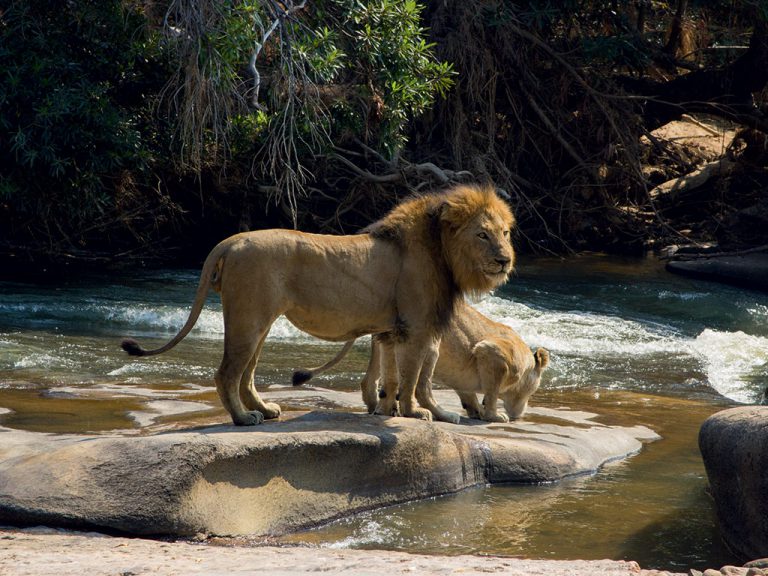
Lions often hunt prey near rivers and waterholes. Look out for mating pairs like this one on the banks of the Sabie River. Photo by Alexander Braczkowski.
In the south, around Crocodile Bridge Rest Camp, the Vurhami Pride is often seen in the trees. The S28 provides good lion sightings all the way to Lower Sabie. The H4-1 to Skukuza is another highly productive lion road. Most of these roads can be driven in a circular route in a day and if you’re still unlucky, try the H1-2 and H1-3 between Skukuza and Satara.
Hluhluwe-Imfolozi Park
Dr Dave Druce, iMfolozi’s reserve ecologist estimates up to 120 lions live in this historic park and some are well known for their tree climbing! They are often found in the iMfolozi section, and most of the roads can produce good sightings, but there are some hotspots to note. The Masinda Pride is often seen hanging around the regular buffalo herds from Masinda Lodge to the Black iMfolozi Bridge between points six and seven (on the visitors map available at the gate). Up to 13 lions can be seen at one time. The beautiful viewpoint at 17, overlooking a serpentine bend in the river, often delivers the Sontuli Pride.
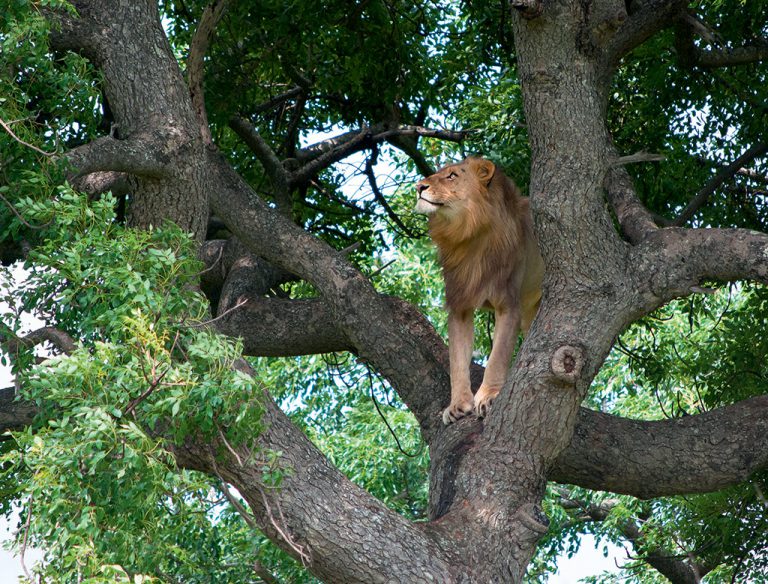
Keep your eyes up! In Hluhluwe-iMfolozi Park, a handsome male and his whole pride rest in a marula tree near Centenary Centre. Photo by Richard Mckibbin.
If you have had no luck, try Sontuli Loop, or take the outer loop roads from 18 (excluding the 4×4 loop) and end at the lookout at 27, making sure you scan the riverbed where they like to lie in the mornings.
Kgalagadi Transfrontier Park
We chose to include Kgalagadi due to its unique ecosystem, photographic potential and, most importantly, the supreme genetic pedigree of its majestic lions. One of the best spots for lions is at Nossob Rest Camp’s waterhole so you don’t even have to leave your camp. The thicker Acacia erioloba woodland in the Nossob River lends itself to higher numbers of preferred lion prey, so focus on the stretch of road between Nossob and Polentswa, and stop off at Cubitjie Quap waterhole.
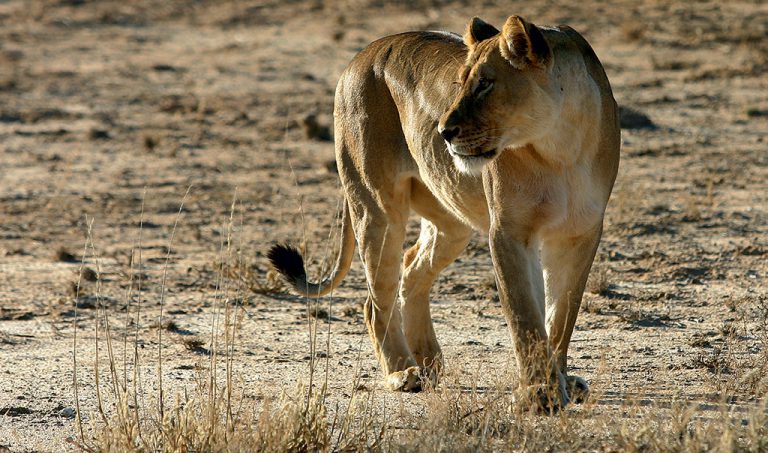
The lions of the Kgalagadi, such as this gorgeous female, are in incredible condition despite the hostile environment. Photo by Richard Mckibbin.
Other highlights between Twee Rivieren and Nossob include Leeuwdril, Rooiputs and Marie se Draai. There’s also a decent chance of spotting lions at Grootkolk in the north.
Where to go for spotting leopard
Few things can compare to the breathtaking experience of a leopard sighting. Due to their secretive nature, phenomenal camouflage and predominantly nocturnal and crepuscular (active at dawn and dusk) behaviour, they are often very tough to find.
Firstly, you need to put yourself in the right place. Getting the timing right is trickier, but one way that helps is to keep your windows open. There are species with far greater skills that we can use to do most of the work for us. Baboons and monkeys have incredible eyesight and use sentinels to spot predators from high vantage points. If you can recognise their warning sounds (loud barks and high-pitched cackles), you’ll know something is close by. In addition, impala and the three Tragelaphus species (kudu, nyala and bush buck) have incredible hearing and smell and will often snort or bark while facing the direction of a predator. Follow their lead.
Finally, learn how leopards behave: they are usually on the move at dawn and dusk, immediately after rains, and on overcast or even lightly rainy days. They are often in large, thick trees during the heat of the day, and in drainage lines, rivers, and on koppies sunning themselves in the early morning or late afternoon. Keep your binoculars out and stop regularly to scan these spots.
Kruger National Park
The Sabie Sand River basin is known for its high density of leopards (possibly the highest in Africa). Your absolute best chance is to drive the H4-1 either in the early morning or late afternoon, between Skukuza and Lower Sabie, slowly, scanning the Kigelia africana (sausage tree), Trichillia emetica (Natal mahogany), Ficus sycomorus (sycamore fig) and Combretum imberbe (leadwood). They are often hanging in these thicker trees during the heat of the day, but can also be spotted crossing the road or in the reed bed or rocks along the river.
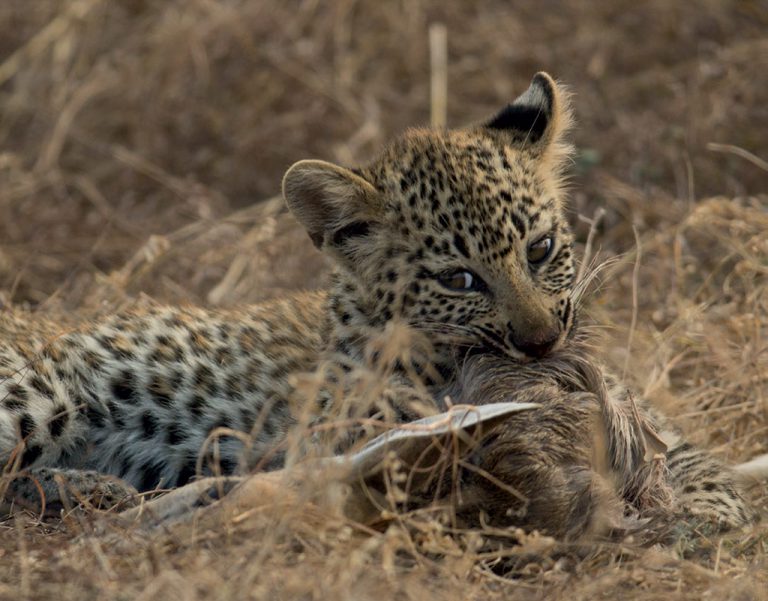
Leopards mainly eat small-to-medium prey (15-40kgs) and that’s what makes Kruger so great for spotting them. Here a young leopard cub finishes the last of a duiker head. Photo by Alexander Braczkowski.
One of the largest leopards known in Kruger, a real beast, frequents the H11 area and even has his own Facebook page (search Mbavala Male Leopard). The S100 around Satara is also a good road for leopards, as well as Nsemani Dam, and the H7 to Orpen, particularly along the section that cuts close to the river. As a rule, scan all riverbeds carefully.
Kgalagadi Transfrontier Park
During the world’s first long-term leopard research study, Professor Koos Bothma (Centre of Wildlife Management in Pretoria) spotted many leopards around the Dankbaar Windmill and Nossob areas. Prey is scarce in this semi-desert ecosystem and leopards here have the world’s largest home ranges (1500 – 4000 km2), and seldom stay on kills for more than a day. Despite this, the semi-open terrain, waterholes and relaxed nature of some cats make good sightings possible.
If you’re coming from Twee Rivieren or Urikaruus you can target the Auob riverbed, paying particular attention to the 13th and 14th boreholes. From Nossob Camp, follow the Nossob River north focusing on Cubitje Quap waterhole. If you’re staying at Nossob visit the hide overlooking the floodlit waterhole at night.
iSimangaliso Wetland Park
The Eastern Shores section of iSimangaliso has to be the most beautiful setting in SA to find leopards and over the years sightings have become increasingly frequent and exciting. Here, strips of forest run parallel to each other, with grassland in between, and leopards are constantly on the move between these forest patches.
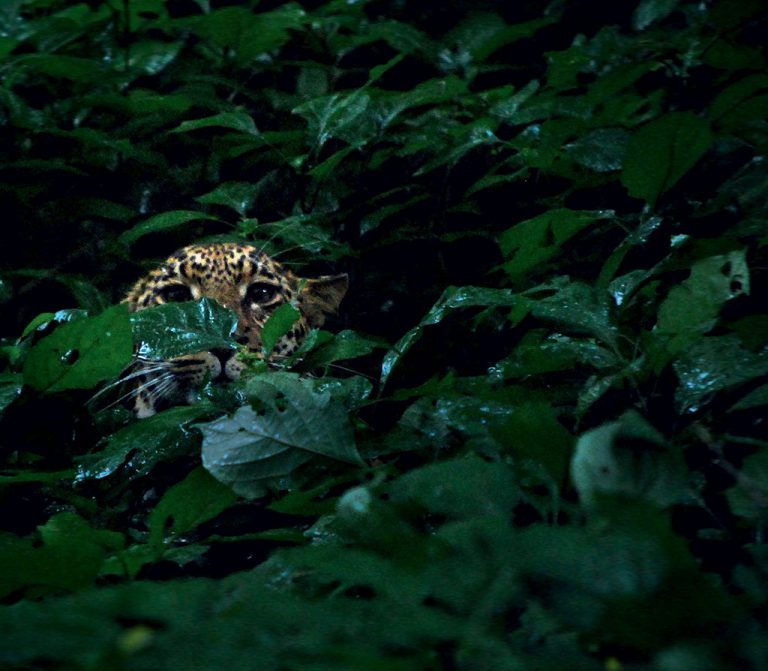
The leopards of iSimangaliso’s Eastern Shores are true ‘jungle cats’, with the perfect habitat to hide and hunt in. Photo by Richard Mckibbin.
Drive slowly, especially at dusk, along the main tar road in the forested section from about two kilometres before and just after the turn off to Mission Rocks. Keep an eye on the forest fringes, there is more than one male that patrols this section and more than two females that reside there too.
The section around Catalina Bay turn off is also productive. Always scour the forest fringes, keeping windows open to listen for monkey or bushbuck alarms. The southern end of the Grassand Loop to Bhangazi Bush Lodge follows a swamp forest, crossing a small bridge, and is always worth a look, as leopards frequent the open grasslands in the early mornings. The end of Dune Loop has two forest sections and the ridge in between this loop and the main road often produces a resident male and female leopard that can be seen from both roads. Scan these areas carefully in the mornings and afternoons.
Where to go for spotting cheetah
The most vulnerable of our three big cats, the cheetah, is fighting for survival with fewer than 5000 found throughout Africa. Sleek, elegant and lightning fast, these flexible and supremely well-adapted predators are open terrain specialists and, in contrast to lions and leopards who prefer ambush-style hunting techniques, rely on unbeatable speed in order to catch prey. Their adorable cubs have been known to mimic honey badgers to avoid predation, but sadly it’s still estimated that only one out of five makes it through its first year of life. In most of our parks, cheetahs are fortunately not too skittish with vehicles so although scarce, their behaviour, diurnal activity and open habitat preferences make for promising sightings.
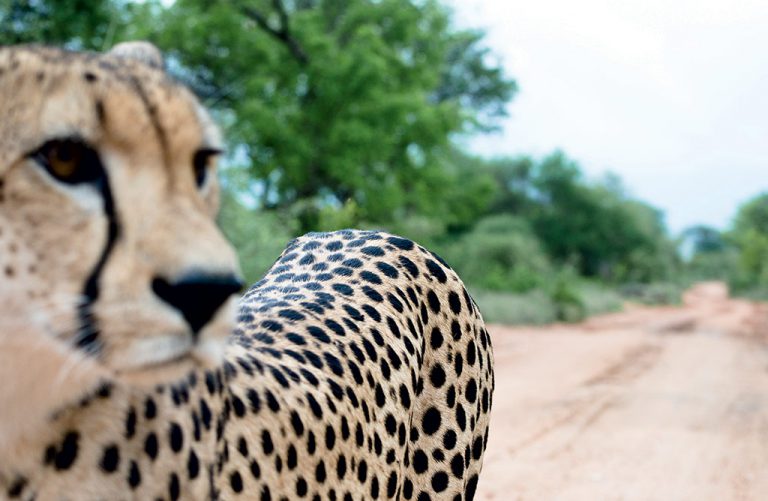
A sleek, elegant male cheetah strolls casually along a lowveld road, scanning for prey. Photo by Richard Mckibbin.
Kruger National Park
The research of Gus Mills, one of the world’s foremost cheetah experts, shows that cheetahs favour knobthorn and marula woodland. In Kruger the south and central areas, particularly Lower Sabie, Satara and Orpen, are best for this. Drive the S28 (Nhlowa Road) from Lower Sabie to Crocodile Bridge Rest Camp, and pay particular attention around Nthandanyathi Hide, as well as Duke’s and Mac’s waterholes. The S29 and roads to Mlondozi Dam are also good options. In the central areas, make sure you check the famous S100 road which regularly reveals cheetahs, and the H7 between Satara and Orpen is up there with the best when it comes to sightings, particularly near the S36 junction.
Hluhluwe-iMfolozi Park
The best spot in the park for cheetahs is around the viewpoint at 17 at the northern end of the Sontuli Loop. It’s a relatively open section of the park and the view site itself and the few kilometres of road in each direction are known to produce cheetah sightings. There is a dominant male who has been there for many years, commonly known as ‘short- tail/half-tail/stumpy’ for obvious reasons. In addition, the roads from point 19 all the way to point 25 in the north-western part of the iMfolozi section have good open stretches but during the heat of the day, just a head may be showing in the shade of an Vachellia tortilis (umbrella thorn) or Vachellia nilotica (scented thorn).
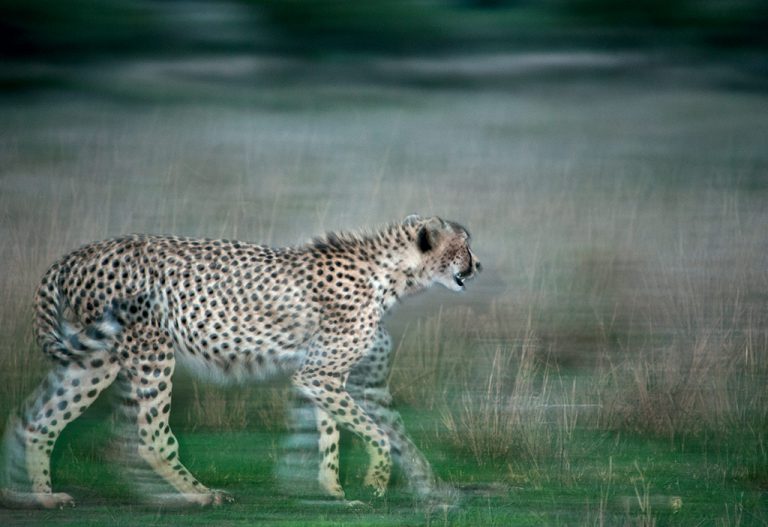
The fastest land animal sometimes allows us to get great sightings when they slow down just enough for a photo. Photo by Richard Mckibbin.
Kgalagadi Transfrontier Park
Gus and Margie Mills spent the majority of their lives studying cheetahs in this park and found they fare far better against lions (who often kill cheetah cubs) than in other sites in Africa. Some of the best places to spot cheetahs in the park are found along the Auob riverbed. Pay particular attention to the stretch of road between Kamfersboom and the 14th borehole. You might be lucky to get a picture of a cheetah on the dune grassveld above the riverbed; they use this as a lookout to spot prey. If you’re following the Nossob riverbed, good spots are Leeuwdril, where there is a coalition of three males, as well as Kij Kij and Melkvlei, which have a number of residents.
Travel planner: Kruger National Park
Need to know: Kruger is a malaria area so take necessary precautions. Roads are accessible with a sedan.
Gate times: Shoulder-season times vary. In midsummer (November to February) the gates open at 5:30am and close at 6:30pm and in midwinter (May to July) they open at 6am, closing at 5:30pm.
Cost: Entrance is R70 per day for South Africans, R140 for SADC residents and R280 for foreign visitors. Kids under 12 pay half. Wild Card holders enter free.
Contact: Tel 0124289111, sanparks.org
Accommodation in Kruger
Orpen Rest Camp is a hotspot for cat activity. Bungalows are from R1000 (sleeps two) and guest cottages are from R1850 for four.
Satara Rest Camp, 50 kilometres east of Orpen, is big-cat heaven and known for its lion sightings. Camping is from R210 for two and R76 per extra adult (maximum six) and R38 per extra child. Bungalows are from R985 (for two) and a guest cottage is from R2150 for four.
Lower Sabie Rest Camp is situated in a unique ecosystem on the Sabie River with easy access to the road network. Camping is from R285 (for two) and R76 per extra adult (maximum six). Bush huts are R550 for two and family bungalows are from R2075 for four.
Skukuza Rest Camp has a great viewing deck from which there are cat sightings. Camping is from R235 (for two) and R76 per extra adult (maximum six and bungalows are from R985 (for two).
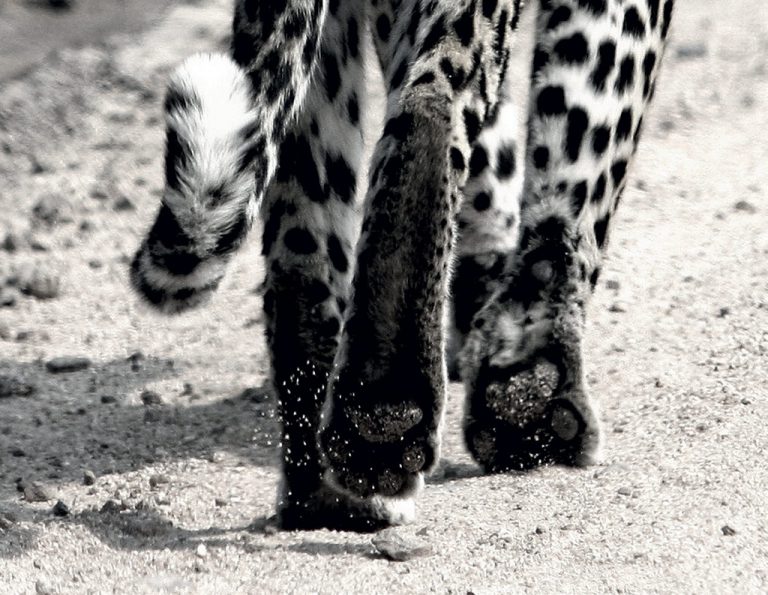
Keep walking. The leopards of the Kruger are very relaxed with vehicles and regularly use the roads in the early morning and late afternoon. Photo by Richard Mckibbin.
Travel planner: Hluhluwe-iMfolozi Park
Need to know: Hluhluwe is a malaria-risk area so take necessary precautions. Fuel is available inside the park at Hilltop Camp (which also has a restaurant and a small shop. The nearest towns are Hluhluwe and Mtubatuba, which both have fuel and supermarkets.
Gate times: In summer (1 November to 30 February) the gates open at 5am and close at 7pm and in winter (1 March to 31 October) they open at 6am and close at 6pm.
Cost: Entry is R90 per person, including a R5 conservation fee, (half price for kids under 12) for South Africans and R175 per person for international visitors. Both visitors pay R47 per vehicle. Rhino Card holders enter for free.
Contact: Tel 0338451000, kznwildlife.com
Accommodation in Hluhluwe-iMfolozi Park
Mpila Camp is the top spot for wildlife and you’ll be surprised at how much you can see right on your doorstep. There’s also a shop with basics such as charcoal, drinks and snacks. From R870 for a two-bed chalet and R1280 for a safari tent for three people.
Masinda Lodge is from R3480 for six people and R580 per person thereafter (sleeps eight).
Travel planner: Eastern Shores, iSimangaliso Wetland Park
Need to know: iSimangaliso is a malaria-risk area so take necessary precautions. The nearest town is St Lucia, which has fuel and supermarkets but basic supplies are available in the curio shop at Cape Vidal.
Gate times: In summer (1 November to 31 March) the gates open at 5am and close at 7pm and in winter (1 April to 31 October) they open at 6am and close at 6pm.
Cost: Entry is R45 for adults and R30 for kids (including a R5 levy). There’s an additional cost of R50 per vehicle (up to six people) and R75 (up to 12 people). If you’re staying overnight there’s an additional charge of R6 per person.
Contact: Tel 0338451000, kznwildlife.com
Accommodation in iSimangaliso Wetland Park
Cape Vidal has fantastic log cabins and a great campsite nestled between tropical forest and sand dunes. From R1 500 for the log cabin for the first three people and R500 pp thereafter (sleeps five) and R520 for a campsite (for two).
Travel planner: Kgalagadi Transfrontier Park
Need to know: There are well-stocked shops at Twee Rivieren, Mata-Mata and Nossob camps, and fuel is available there too. Roads are not tarred but still driveable in a sedan. Don’t forget to deflate your tyres to 1.5 bar for driving on sand and prepare for the dust.
Gate times: The main entrance gate to the park at Twee Rivieren opens daily at 7am. In midsummer (November to January) the camp gates open at 5:30am and close at 7:30pm and in midwinter (June to July) they open at 7:30am and close at 6pm. Gate times in the shoulder seasons vary.
Cost: Entrance is R70 per day for South Africans, R140 per day for SADC residents and R280 per day for international visitors. Kids under 12 pay half price.
Contact: Tel 0124289111, sanparks.org
Accommodation in the Kgalagadi Transfrontier Park
Nossob Rest Camp has a fantastic selection of campsites, chalets and guest cottages. The waterhole regularly produces sightings (look out for leopards at night). Camping is from R255 (for two) and chalets are from R870 (sleeps two). There is also a large, comfortable family cottage from R1495 (sleeps four).
Grootkolk Wilderness Camp is an unfenced campsite nestled in the heart of the dunes and you’ll have just the stars and lions for company. The only accommodation option here is a two sleeper, desert cabin. From R1510 per night (sleeps two).
This article was first published in the February 2016 issue of Getaway magazine.
Get this issue →
All prices correct at time of publication, but are subject to change at each establishment’s discretion. Please check with them before travelling.
You may also like
Related Posts
Millions of migrating wildebeest, magical sunsets, incredible wildlife photography and wide open skies make the...
read more
Plan your next local nature escape now. These off-the-grid campsites are serious about reducing your...
read more
For the first time in 150 years, a group of 28 elephants will roam again...
read more